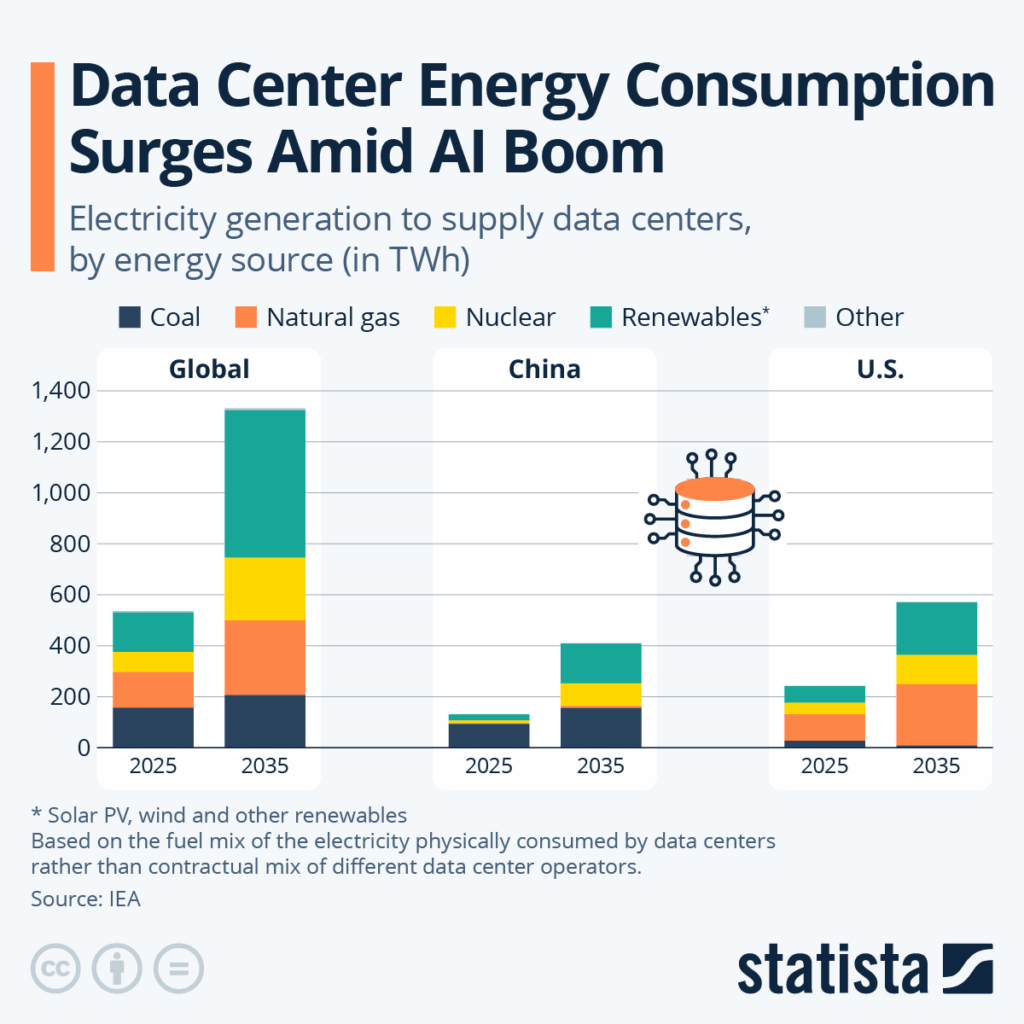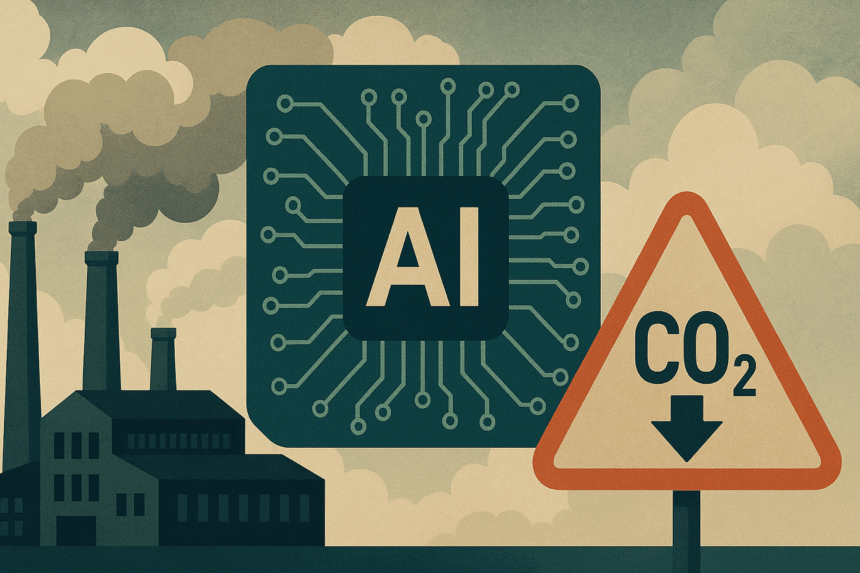Artificial Intelligence (AI) is transforming the world, but its growth comes with an environmental cost. The soaring energy consumption of AI data centers increasingly impacts global carbon emissions. TF explores how AI affects emissions, recent regulatory debates, and the challenges faced by tech giants striving for greener operations.
What’s Happening & Why This Matters
The U.S. Republican Party pushes a major spending bill that restricts states from regulating AI. This move raises concern among experts about AI’s unchecked energy use, which could worsen climate change. Harvard University research estimates that AI could emit about one billion tons of CO₂ in the U.S. over the next decade. That equals more emissions than Japan produces annually or three times the UK’s yearly output.
The bill introduces a “pause” on state-level AI regulations for a decade, coinciding with rapid growth in AI’s electricity demands. Data centers powering AI consume massive electricity, much of it from fossil fuels like coal and gas. AI services, such as ChatGPT, require about ten times the energy of a standard Google search. This increased demand threatens climate goals and public health.

Gianluca Guidi, a Harvard public health scholar, points out that limiting regulations slows the shift from fossil fuels to cleaner energy in AI operations. He warns, “We talk a lot about what AI can do for us, but not nearly enough about what it’s doing to the planet.” His remarks echo growing calls for balancing AI’s promise with environmental responsibility.
Tech giants like Google face the same dilemma. Their emissions have jumped sharply — Google reports a 51% increase since 2019. While they invest in renewables and carbon capture, Google admits decarbonizing fast enough is tough as electricity use rises. Data centers now use nearly 2% of all U.S. electricity. The International Energy Agency forecasts data center power needs doubling by 2026, reaching Japan’s entire electricity consumption level.
Google also notes the slow rollout of advanced clean energy solutions like Small Modular Reactors (SMRs), which could help power data centers sustainably. SMRs promise quick and scalable nuclear power but remain costly and face regulatory hurdles.
Despite criticism, AI supporters argue that smarter AI could improve energy efficiency. AI-powered tools can optimize grid management and reduce waste, potentially offsetting some emissions. But experts like Alex Hanna from the Distributed AI Research Institute call this “greenwashing,” warning that it masks the true environmental toll.
Legislators remain divided. Some Democrats, like Senator Ed Markey, denounce the regulatory pause as reckless, stressing that AI’s energy impact harms communities and the climate. Even some Republicans oppose the restriction, showing that the debate cuts across political lines.
This regulatory tension unfolds amid rapid AI adoption in sectors like healthcare, media, and education. The proposed pause on AI rules could last ten years, during which the sector’s energy footprint may grow unchecked.
TF Summary: What’s Next
AI’s energy hunger clashes with climate goals as lawmakers debate regulation limits. The U.S. must balance AI innovation with urgent emissions reductions. Industry leaders and policymakers face pressure to adopt clean energy faster and ensure AI development does not deepen the climate crisis.
Companies will need to accelerate investments in renewables and transparent sustainability practices. Lawmakers may revisit or revise regulatory moratoriums to empower states and federal bodies to enforce greener AI standards.
— Text-to-Speech (TTS) provided by gspeech


